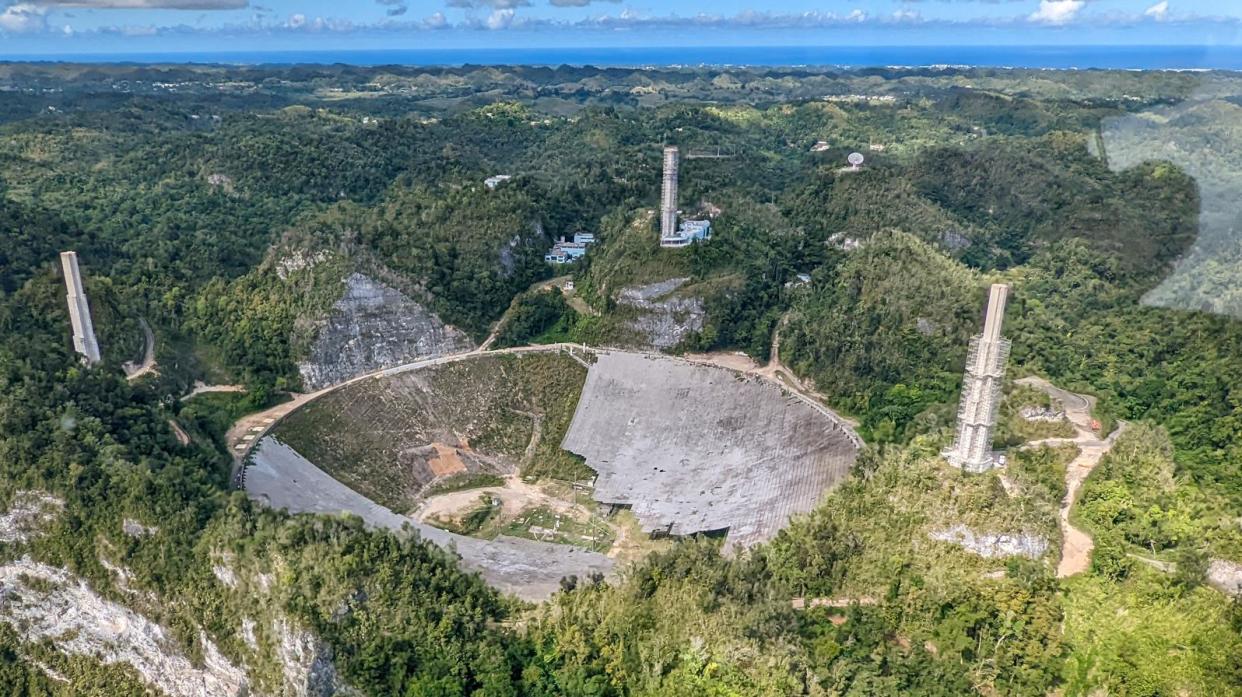Arecibo Observatory Prepares for Life After Astronomy

In December 2020, the Arecibo Observatory’s radio telescope was destroyed when a catastrophic cable failure caused its 900-ton platform to collapse onto the iconic dish below. Now, the National Science Foundation has named the stewards of the site’s future as an education center, marking the probable end of Arecibo’s astronomical research endeavors.
Original plans to turn the destroyed radio telescope site into an education center were made public in October 2022, when the NSF began seeking proposals for managing the new project. At the time, the planned opening of such an education center was 2023.
Read more
Sony Deletes Mentions Of Troubled Star Wars: KotOR PS5 Remake, Hides Trailer [Update]
Melania Trump Renegotiates Her Very Large Prenup to Protect Her Very Large Son’s Trust
Teenage Black Girl Stabbed to Death After Friend Allegedly Refused Flowers From Ex-Boyfriend
As the publication Science reported in October 2022, plans for Arecibo’s successor were refined as the NSF sought to reduce spending on the observatory, which cost the foundation $7.5 million per year. The NSF’s investment in the education center will be $5.5 million, spread over five years, Nature reported.
The center’s stated goals are to promote STEM education, broaden participation in STEM, and build new partnerships while building on existing ones. Sean Jones, the assistant director for the directorate of mathematical and physical sciences at NSF, told AP in October 2022 that the United States has other radar facilities that can do what Arecibo was doing for its 57-year tenure, hence the veteran observatory not needing a rebuild.
Arecibo was integral to radio astronomy for its nearly 60 years of operation; its legacy persists, as its data is still being used in new observations, like the North American Nanohertz Observatory for Gravitational Waves (NANOGrav)’s 12.5-year dataset. That dataset set the stage for the International Pulsar Timing Array consortia independently announcing the first signals indicative of a gravitational wave background earlier this year.
There are currently no plans to use instruments on the Arecibo Observatory site for research, the NSF told Nature, though it would consider proposals for using existing or new equipment on the site. For now, though, expect an education center—less than what many astronomers hoped for, but more than the sorry state the site is currently in.
More: Wrecked Arecibo Observatory May Undergo a Downsized Resurrection
More from Gizmodo
Sign up for Gizmodo's Newsletter. For the latest news, Facebook, Twitter and Instagram.

